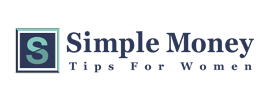
05 Jul Should I Cash Out My 401(k) Plan to Pay off Debt?
Have you ever wondered if it would be worth it to cash out your 401(k) plan to pay off debt? Many people think about doing this, so you’re not alone.
First, congratulations for wanting to lower your debt and for starting to think of creative ways to do that. Getting out of debt is a fantastic goal toward financial freedom. Second, let’s look at the pros and cons of paying off your debt by cashing out your 401(k) plan.
First Things First
Before you can even think about cashing out your 401(k), you have to determine if you’re eligible to do so. For example, each plan is different, so you need to read the fine print. Most plans only allow you to borrow the money that you, yourself contributed, not what your employer has contributed.
Take some time to really think about your future. Remember that one day you will want to retire, and if you spend your retirement money (or pay off debt with it), you may not regret that decision now, but you’ll probably regret it later. Think about it: You don’t want to end up at age 65 with a depleted 401(k) and way less to live on than you hoped, and you certainly don’t want to have to keep working when you’ve been looking forward to taking it easy in your retirement years.
Understand the Process
It’s important to understand the process of cashing out your 401(k) plan to pay off debt.
First, you’re penalized when you borrow against your retirement plan. There’s the 10% early withdrawal penalty, plus you have to pay taxes on what you take out. (Remember, when you put money into your 401(k), it’s tax-free. And if you wait until you’re 59.5 years old, you can withdraw money without penalty or taxes. Why pay taxes on money when you don’t have to? (Unless, of course, you enjoy giving the government more money than you need to … ummm, no thanks!)
Let’s use some numbers to illustrate. Let’s say you’re single and your taxable income is $50,000. If you take $45,000 out of your 401(k), you pay a $4,500 penalty right off the bat. Then you get bumped to a higher tax bracket for the year because your income jumped to $95,000. Now, you’re paying 28% taxes instead of 25%.
Next, determine whether your 401(k) offers a loan provision. If it does, then consider the terms carefully, and see if it makes sense to cash it out to pay down debt as you pay back your 401(k) at a lower interest rate. This may not a bad option and is better than withdrawing money.
PROS and CONS to Cashing Out Your 401(k)
We’ve already talked about how cashing out your 401(k) to pay off debt will result in a sizable penalty, along with taxes that you wouldn’t normally have to pay if you left the money alone. Those are obvious cons.
Another downside to withdrawing money from your retirement fund is that after you’ve done it once, it’s a little easier to do it again … and again. And just because you can do it doesn’t mean you should. It can become easy to view your 401(k) as just another bank account when, really, it’s not. It’s better to consider your retirement fund as “off-limits” and to utilize other methods to reduce debt and then stay out of debt.
Paying down debt by cashing out your 401(k) plan isn’t always a bad idea, but that’s where a trusted financial advisor can help steer you in the right direction for your specific situation.
Alternative Ways to Pay Down Debt
- Stop 401(k) contributions – If you’re contributing to your retirement plan, consider redirecting those payments toward debt reduction. By taking a break from paying into your 401(k), you can avoid the penalty and taxes while making a significant dent in your debt. Sure, your final numbers for retirement will be affected some but not too drastically. Once your debt is paid off, start making payments to your 401(k) again, and maybe even increase the amount you’re paying to make up for the break you took.
- Negotiate with debt companies – Consider contacting your credit card or loan companies to negotiate your interest rates. If you have decent to good credit, then you have a pretty good chance of lowering your interest rate by several percentage points.
- Make extra payments – By making extra payments on your credit cards and loans, you can decrease those debts faster. Utilize the debt snowball technique and attack the smallest debt first, then the next smallest, and so on. This will reduce both the length of the loan and the amount of interest you pay overall.
- Consider a personal loan – I know this isn’t a great option, but it’s still an option. Perhaps approach a friend or family member who has money available. Approach them from a business standpoint, and offer to pay interest on the money you borrow. For example, if you owe $20,000 in credit card debt with 20% interest, offer to pay 10% interest to your friend or family member. You’ll still come out ahead; it’s worth thinking about.
- Investigate peer-to-peer lending – If you haven’t heard of this, it’s a way to borrow money through a private investor at a lower rate than you’re paying to the credit card companies. Yes, you’re still “in debt,” but at least you’re getting more ahead with a lower interest rate. You can find out more about peer-to-peer lending at www.lendingclub.com and www.prosper.com.
- Get a personal loan – Approach your local bank or credit union and see if you can get a personal loan at a lower interest rate than you’re paying on your credit cards. If so, you’ll reduce the length of your loan and how much you pay in total interest.
- Consider consolidation – If you have student loans or other private loans and your credit rating is better now than when you first got the loan, try consolidating them with a better interest rate.
Even though debt can feel overwhelming and cashing out your 401(k) plan to pay off the debt sounds like a great, quick fix, you really have to consider the whole picture before you decide to borrow against your retirement plan. A trusted financial advisor can also help you make the best decision for you.
This newsletter was prepared by a third party company to be used on the Russell & Company and Simple Money Tips for Women websites.

